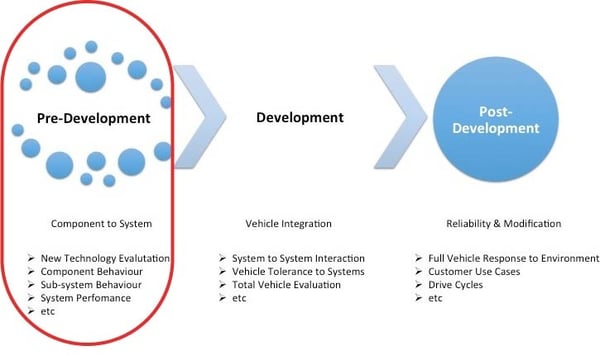
In our last blog readers learned how simulation is the secret to reducing 33% or more from the product design lifecycle. Part Two: Pre-Development - Build a Component that Works explores how simulation saves time, money and resources in even the earliest stage of the process, Pre-Development.
In Phase One, simulation technology enables the engineering and design teams to prove a concept without ever building a physical prototype, whether it be at the component or system level. Prototypes are developed virtually, resulting in a simulated model that very precisely approximates the real world.
Using simulation software, OEM’s can create testing scenarios and expose the virtual model to precise experimental standards for the sub-system, such as anticipated extreme conditions, to see how they will respond to various sets of conditions. In the process, you mature the design much more quickly because you are not burdened by the time and expense of physical prototyping. Once you have ascertained how the system performs in the vehicle under these conditions, you then graduate to the Development phase, where a prototype of the vehicle can operate under standards of real-world driving conditions.
Simulation has been demonstrated to cut 33% off the typical time spent in the Pre-Development phase, and that was for a very sophisticated luxury automobile manufacturer. For other manufacturers, the expected reduction in time is much greater than that.

Time savings is only one measurement of value. What about the reduced cost associated with virtual prototyping? All told, this reduction can represent millions (and sometimes tens of millions) of dollars when factoring in labor, material, transportation, parts, etc. — multiplied across an OEM’s entire product line. In the Pre-Development phase, simulation eliminates nearly 80% of those costs!
Keep your eyes peeled for our next blog to see why simulation is valuable in the Development stage. Stay tuned as we explore how you can implement simulation into your design process, saving valuable time, money and resources!
Learn more about our transient thermal simulation TAITherm on our website.
